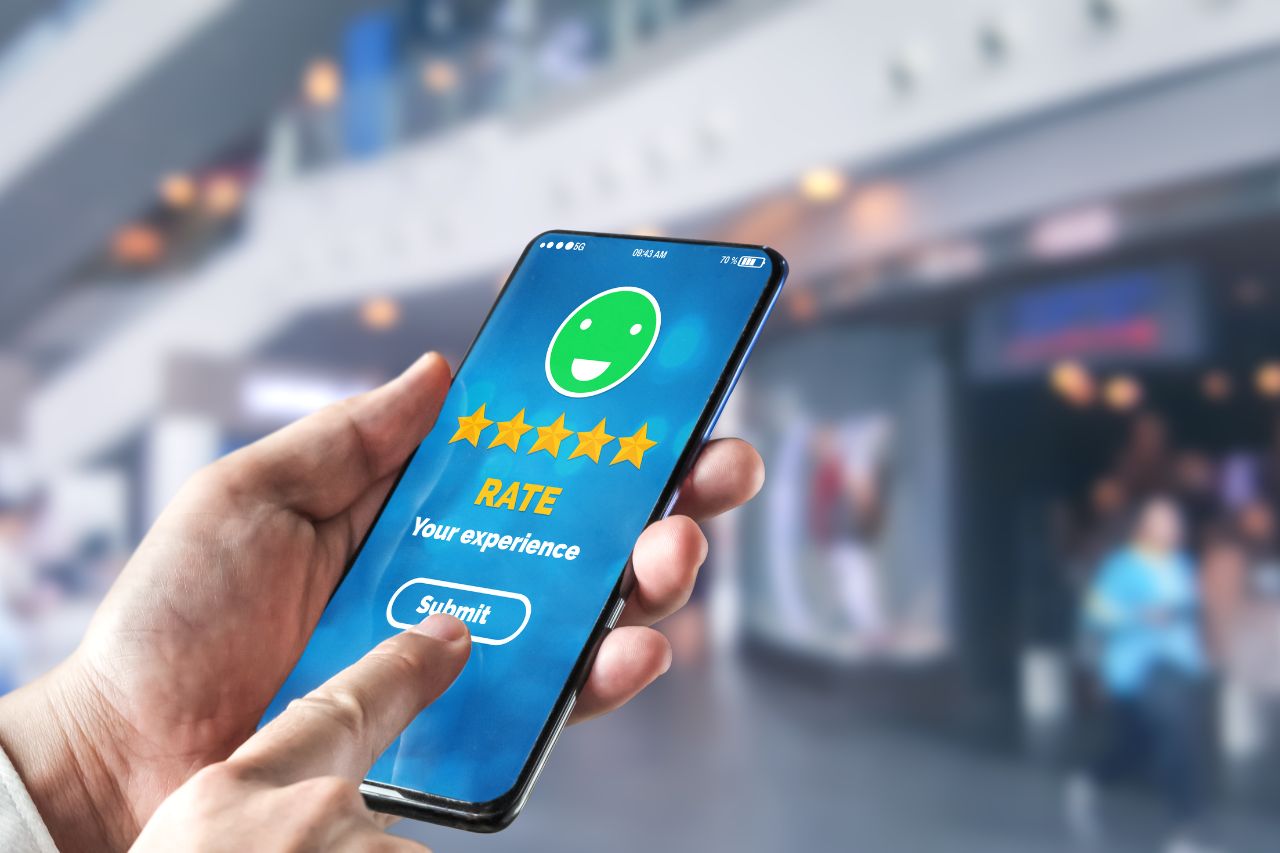Retailers spend an immense amount on marketing initiatives to attract new customers and expand sales growth. Successful implementation of marketing plans helps retailers maintain a competitive advantage and reach their marketing goals.
Data-driven precision targeting enables marketers to target specific ads at specific moments for maximum impact and deliver a bespoke shopping experience for shoppers. It increases ROI while providing personalized ads.
1. Personalized Customer Experience
Customers desire brand experiences tailored to them; ones that make them feel seen, heard, and valued – experiences that inspire loyalty, decrease churn, and boost both top-line revenue and customer lifetime value.
Personalized marketing refers to providing each customer with content and recommendations based on real-time intent, past browsing/purchase data, and insights derived from advanced analytics technologies. This creates an intimate experience that fosters strong emotional bonds while building brand recognition among each customer.
Personalization can be done across various digital channels, such as email, social media, and websites. But for the best results, your omnichannel strategy must ensure customers always receive relevant content at the appropriate time across channels – this way the personalized experience remains effective even as customers switch between them.
Successful retailers realize the full power of personalization by connecting multiple channels and providing consistent, relevant, and compelling messaging across them all. Nike is widely lauded for their personalized shopping experience which features both an online 3D platform that enables customers to design their shoes as well as an in-store digital kiosk that makes finding and purchasing shoes effortless – these innovative strategies make an impactful difference in how customers engage with brands while fuelling growth in 2024.
2. Influencer Collaborations
Influencer marketing collaborations have become an effective marketing strategy for retailers, due to the trust and loyalty of influencers’ followers. From sponsored content creation to affiliate marketing strategies, influencers create shoppable and engaging posts that increase brand recognition while leading to higher sales figures.
Patrick O’Keefe of E.l.f. Beauty VP of Integrated Marketing Communications, Influencer Kensington Tillo, and Kosas founder Sheena Zadeh-Daly discuss key elements for successful influencer collaborations. They explore ensuring influencer style and voice are in sync with brand audiences as well as authentic methods of incorporating branded content.
Retailers seeking the right fit should first determine their goals and target audience before selecting influencers who can best reach and engage them – this can be accomplished by studying each influencer’s niche, following engagement rate and past collaborations as well as reviewing the quality of content provided to ensure a successful campaign.
Finally, brands should carefully consider the format and duration of an influencer takeover and develop an accompanying promotional strategy. They could create a dedicated hashtag on social channels and share it across channels; alternatively, they could add a countdown timer that directs audiences directly to the influencer’s takeover page.
Marketers should also explore AI-generated content’s potential to enhance campaigns and drive conversions, along with influencer-created material. AI can generate relevant, personalized material at just the moment when users are ready to convert, increasing traffic and quality leads at once. This may include automatically generated information based on browsing histories or product attributes of customers – something influencer-generated posts cannot do effectively. AI content creation could act as a complement or even a standalone campaign that drives more conversions by providing relevant messages right when customers want it most – helping increase traffic as well as quality leads by offering relevant info at just the exact moment they want it.
3. AI-Powered Targeting
AI-powered targeting differs significantly from traditional marketing strategies by employing data to precisely target and identify audiences. It sifts through massive volumes of customer behavior data and micro-moments to uncover hidden trends and insights; then uses that data to predict campaign outcomes and deliver tailored messages directly to specific segments.
AI-powered targeting’s predictive ability gives it an edge, helping marketers avoid targeting audiences indiscriminately – leading to higher CTRs and conversion rates as well as optimizing ad spend by identifying the optimal channels and times to reach given audiences.
One of the greatest challenges of performance marketing is targeting audiences accurately. To overcome this hurdle, AI-powered targeting utilizes predictive analytics to pinpoint the optimal channel and time to reach each audience segment, as well as identify those most likely to respond favorably and maximize Return on Ad Spend (ROAS).
AI-powered targeting also enables brands to find new customers by anticipating the behaviors of existing ones. This enables marketers to deliver personalized offers that match up perfectly with user interests while helping build trust and strengthen loyalty over time.
AI-enabled personalization tools use vast amounts of digital footprint information about an individual to learn their interests, preferences, and lifestyle. Spotify uses its AI-powered marketing tools to curate playlists based on listening history and current music trends across genres; Amazon uses similar AI tech to generate product recommendations that match up with user purchasing history or behavioral signals.
4. Social Commerce
Social media platforms now offering features like buy buttons and in-app checkout can streamline the purchasing experience for customers while providing brands with valuable demographic data to understand what resonates with their audience so that products meet their needs more accurately.
As online retail continues its ascent, more companies are turning to social commerce in their marketing strategies. By posting products for sale on social platforms and linking back to their website for purchase, companies not only drive sales but can capture leads for future campaigns by offering customers an effortless path from discovery to conversion.
Social platforms such as Instagram and Facebook are already contributing to this trend by giving brands the ability to sell products directly through them. Tiny Tassel, a small jewelry retailer, offers shoppable listings on its Facebook page that include product details, customization options, and shipping info – this ensures buyers have all of the information needed before making an informed decision and creates trust between sellers and buyers.
Crowdfunding is another form of social commerce, in which individuals donate funds to innovative projects they’re passionate about in exchange for rewards like discounted products or limited edition merchandise. Crowdfunding provides an effective way to launch and bring new ideas into production but shouldn’t be seen as an alternative form of eCommerce.
Although only in its infancy, the social e-commerce revolution promises to transform the retail landscape and drive business expansion in 2024. Retailers should remain aware of emerging trends to keep customers satisfied while remaining cost-competitive.
5. Augmented Reality
Augmented reality (AR) is a technology that superimposes digital data onto real-world environments to create an immersive virtual experience. AR can be delivered using smart glasses, tablets, smartphones, or an automotive heads-up display (HUD). Key to AR’s effectiveness lies within its camera sensor’s ability to recognize key facets of real objects which it overlays with digital data.
AR will revolutionize retail environments and drive business expansion in 2024 by creating personalized interactions, improving product visualization, and providing shoppers with more accurate product details. Furthermore, it acts as a bridge between physical and digital worlds making it ideal for customer engagement, brand promotion, and in-store experiences.
Furniture retailers can use AR to set up in-store displays that allow customers to interact and visualize 3D holographic versions of their future home decor. Fashion brands such as Kate Spade and cosmetics company Charlotte Tilbury use this instant personalization technique to show customers how different lipstick or makeup colors would look on them; this encourages buyers to purchase higher-priced products and reduces store returns.
AR will make retail shopping simpler for consumers while simultaneously driving up store sales. Shoppers will be able to track their cart as it moves through stores to ensure that any relevant offers or promotions don’t pass them by, providing consumers with a seamless shopping experience and increasing store sales in tandem.
From immersive retail marketing strategies to an array of augmented reality applications for various industries, the possibilities presented by this tech are boundless. As a result, companies are exploring innovative strategies for capitalizing on this disruptive tech and optimizing their return on investment.











